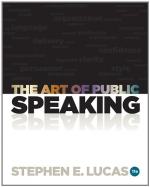To describe is to call up a picture in the mind of the hearer. “In talking of description we naturally speak of portraying, delineating, coloring, and all the devices of the picture painter. To describe is to visualize, hence we must look at description as a pictorial process, whether the writer deals with material or with spiritual objects."[19]
If you were asked to describe the rapid-fire gun you might go about it in either of two ways: give a cold technical account of its mechanism, in whole and in detail, or else describe it as a terrible engine of slaughter, dwelling upon its effects rather than upon its structure.
The former of these processes is exposition, the latter is true description. Exposition deals more with the general, while description must deal with the particular. Exposition elucidates ideas, description treats of things. Exposition deals with the abstract, description with the concrete. Exposition is concerned with the internal, description with the external. Exposition is enumerative, description literary. Exposition is intellectual, description sensory. Exposition is impersonal, description personal.
If description is a visualizing process for the hearer, it is first of all such for the speaker—he cannot describe what he has never seen, either physically or in fancy. It is this personal quality—this question of the personal eye which sees the things later to be described—that makes description so interesting in public speech. Given a speaker of personality, and we are interested in his personal view—his view adds to the natural interest of the scene, and may even be the sole source of that interest to his auditors.
The seeing eye has been praised in an earlier chapter (on “Subject and Preparation”) and the imagination will be treated in a subsequent one (on “Riding the Winged Horse"), but here we must consider the picturing mind: the mind that forms the double habit of seeing things clearly—for we see more with the mind than we do with the physical eye—and then of re-imaging these things for the purpose of getting them before the minds’ eyes of the hearers. No habit is more useful than that of visualizing clearly the object, the scene, the situation, the action, the person, about to be described. Unless that primary process is carried out clearly, the picture will be blurred for the hearer-beholder.
In a work of this nature we are concerned with the rhetorical analysis of description, and with its methods, only so far as may be needed for the practical purposes of the speaker.[20] The following grouping, therefore, will not be regarded as complete, nor will it here be necessary to add more than a word of explanation:
Description for Public Speakers




